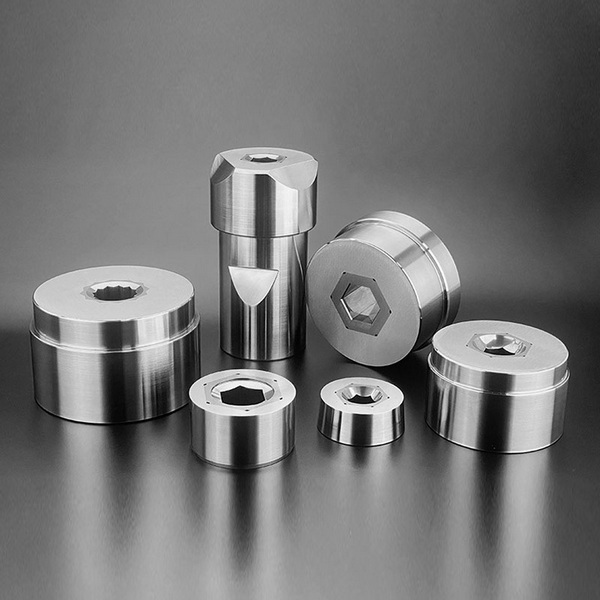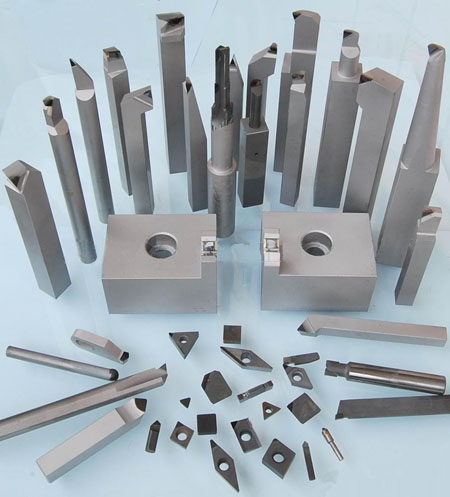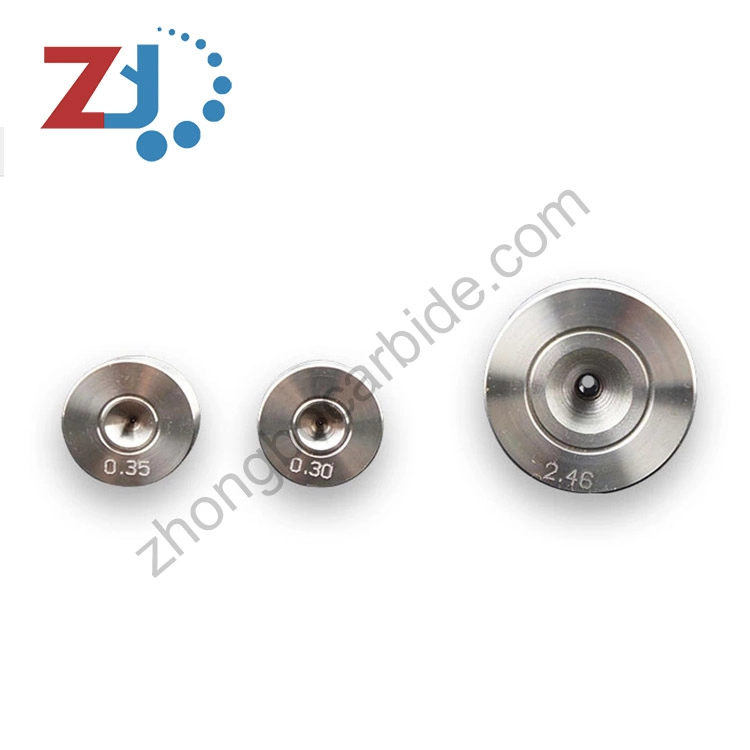Content Menu
● Introduction to Tungsten Carbide
>> Chemical Composition
● Applications of Tungsten Carbide
>> Industrial Processes
● Is Tungsten Carbide Ferrous?
>> Comparison with Ferrous Metals
● Environmental and Health Considerations
>> Recycling and Sustainability
● Future Developments
>> Technological Innovations
● Conclusion
● FAQ
>> 1. What is the primary composition of tungsten carbide?
>> 2. Is tungsten carbide used in cutting tools?
>> 3. What are the key properties of tungsten carbide?
>> 4. Can tungsten carbide be used in high-temperature applications?
>> 5. Is tungsten carbide magnetic?
● Citations:
Tungsten carbide, known for its exceptional hardness and durability, is a compound made of tungsten and carbon, with the chemical formula WC. It is widely used in industrial applications due to its high wear resistance and thermal properties. However, the question of whether tungsten carbide is a ferrous metal often arises due to its frequent use in conjunction with metals. In this article, we will delve into the properties of tungsten carbide, its applications, and clarify its classification as a ferrous or non-ferrous material.

Introduction to Tungsten Carbide
Tungsten carbide is a black hexagonal crystal with a metallic luster, similar in hardness to diamond. It is an excellent conductor of electricity and heat, making it suitable for various industrial uses, such as cutting tools, wear-resistant parts, and high-temperature components. The microhardness of tungsten carbide is approximately 17,300 MPa, and it has a high elastic modulus of 710 GPa.
Tungsten Carbide Properties:
- Hardness: Tungsten carbide ranks about 9.0–9.5 on the Mohs scale, with a Vickers hardness number around 2600.
- Thermal Conductivity: It has a thermal conductivity of 110 W/(m·K).
- Chemical Resistance: Insoluble in water, hydrochloric acid, and sulfuric acid, but soluble in a mixture of nitric and hydrofluoric acids.
Chemical Composition
Pure tungsten carbide contains no iron, making it a non-ferrous material. The term "ferrous" refers to metals that contain iron, derived from the Latin word "ferrum," meaning iron. Tungsten carbide's composition primarily includes tungsten and carbon, with the most common form used in industry containing about 94% tungsten and 6% carbon by weight. To enhance its properties, tungsten carbide is often combined with metallic binders like cobalt or nickel, forming a cermet (ceramic-metallic composite).
Applications of Tungsten Carbide
Tungsten carbide is utilized in a wide range of applications due to its hardness and wear resistance:
- Cutting Tools: Used in high-speed cutting tools for machining metals and other materials.
- Wear-Resistant Parts: Applied in components that require high durability, such as drill bits and saw blades.
- Aerospace and Defense: Employed in jet engine components and other aerospace materials.
- Dental Tools: Tungsten carbide is also used in dental burs due to its hardness and durability.
- Jewelry: Often used in wedding bands and other jewelry due to its scratch resistance and durability.
- Mining Tools: Used in mining equipment due to its ability to withstand harsh conditions.
Industrial Processes
The production of tungsten carbide involves several steps, including the synthesis of tungsten carbide powder and the sintering process to form the final product. The sintering process involves heating the powder under high pressure to create a dense and strong material. This process can be enhanced by adding metallic binders, which help improve the material's toughness and resistance to cracking.
Is Tungsten Carbide Ferrous?
As mentioned earlier, tungsten carbide does not contain iron, which is the defining characteristic of ferrous metals. Therefore, it is classified as a non-ferrous material. Even when tungsten carbide is combined with other metals to form composites, such as cemented carbides with cobalt, it is not considered ferrous unless iron is present in significant amounts.
Comparison with Ferrous Metals
Ferrous metals, like steel and iron alloys, are known for their magnetic properties and high tensile strength. In contrast, tungsten carbide is valued for its hardness and resistance to wear and corrosion, making it ideal for applications where these properties are crucial. While ferrous metals are widely used in construction and machinery due to their strength and cost-effectiveness, tungsten carbide is preferred in applications requiring extreme hardness and durability.

Environmental and Health Considerations
The use of tungsten carbide also raises environmental and health concerns. Tungsten mining can have environmental impacts, such as water pollution and soil degradation. Additionally, the inhalation of tungsten carbide dust during manufacturing processes can pose health risks, including respiratory issues. Therefore, strict safety measures and environmental regulations are necessary to mitigate these risks.
Recycling and Sustainability
Efforts are being made to improve the sustainability of tungsten carbide production. Recycling tungsten carbide scrap is becoming more common, reducing the need for primary tungsten extraction and minimizing waste. This approach not only conserves resources but also helps reduce the environmental footprint of tungsten carbide production.
Future Developments
Research into new applications and production methods for tungsten carbide continues to advance. For instance, nanoscale tungsten carbide particles are being explored for their potential in energy storage and catalysis. Additionally, advancements in 3D printing technology are enabling the creation of complex tungsten carbide structures, which could expand its use in aerospace and other high-performance industries.
Technological Innovations
Technological innovations are also improving the manufacturing efficiency and quality of tungsten carbide products. Advanced sintering techniques and improved binder systems are enhancing the mechanical properties of tungsten carbide composites. These advancements are crucial for meeting the increasing demand for high-performance materials in various sectors.
Conclusion
In conclusion, tungsten carbide is not a ferrous metal due to its lack of iron content. Its unique properties make it an essential material in various industrial applications, particularly where high hardness and wear resistance are required. Understanding the distinction between ferrous and non-ferrous materials is crucial for selecting the appropriate materials for specific uses.

FAQ
1. What is the primary composition of tungsten carbide?
Tungsten carbide is primarily composed of tungsten and carbon, with the chemical formula WC. It typically contains about 94% tungsten and 6% carbon by weight when used in industrial applications.
2. Is tungsten carbide used in cutting tools?
Yes, tungsten carbide is widely used in cutting tools due to its high hardness and wear resistance. It is often used in drill bits, saw blades, and other machining tools.
3. What are the key properties of tungsten carbide?
Tungsten carbide is known for its exceptional hardness (similar to diamond), high thermal conductivity, and resistance to corrosion. It has a high melting point and is an excellent conductor of electricity and heat.
4. Can tungsten carbide be used in high-temperature applications?
Yes, tungsten carbide is suitable for high-temperature applications due to its high melting point (2,870°C) and thermal conductivity. It is used in components like jet engine parts and resistance heating elements.
5. Is tungsten carbide magnetic?
Tungsten carbide itself is not ferromagnetic, meaning it is not attracted to magnets in the same way iron and steel are. However, it can be used in conjunction with magnetic materials in certain applications.
Citations:
[1] https://www.polytechforum.com/metalworking/is-tungsten-carbide-ferrous-318627-.htm
[2] https://www.refractorymetal.org/tungsten-carbide-uses-properties.html
[3] https://www.istockphoto.com/photos/tungsten-carbide
[4] https://www.alamy.com/stock-photo/tungsten-carbide-tool.html
[5] https://en.wikipedia.org/wiki/Tungsten_carbide
[6] https://www.freepik.com/free-photos-vectors/tungsten-carbide
[7] https://www.alamy.com/stock-photo/tungsten-carbide.html
[8] https://www.linde-amt.com/resource-library/articles/tungsten-carbide
[9] http://www.tungsten-carbide.com.cn/tungsten-carbide-grade.html
[10] https://www.azom.com/article.aspx?ArticleID=1203
[11] http://www.chinatungsten.com/Ferrous-Metal.html
[12] https://www.shutterstock.com/search/tungsten-carbide
[13] http://picture.chinatungsten.com/list-18.html
[14] https://www.linkedin.com/pulse/categories-tungsten-carbide-shijin-lei-1c
[15] https://www.vedantu.com/chemistry/tungsten-carbide
[16] https://www.reddit.com/r/askscience/comments/9whr5d/is_tungsten_carbide_an_alloy/
[17] https://www.toptechdiamond.com/what-is-tungsten-carbide/
[18] https://periodictable.com/Elements/074/pictures.html
[19] http://www.tungsten-carbide.com.cn
















